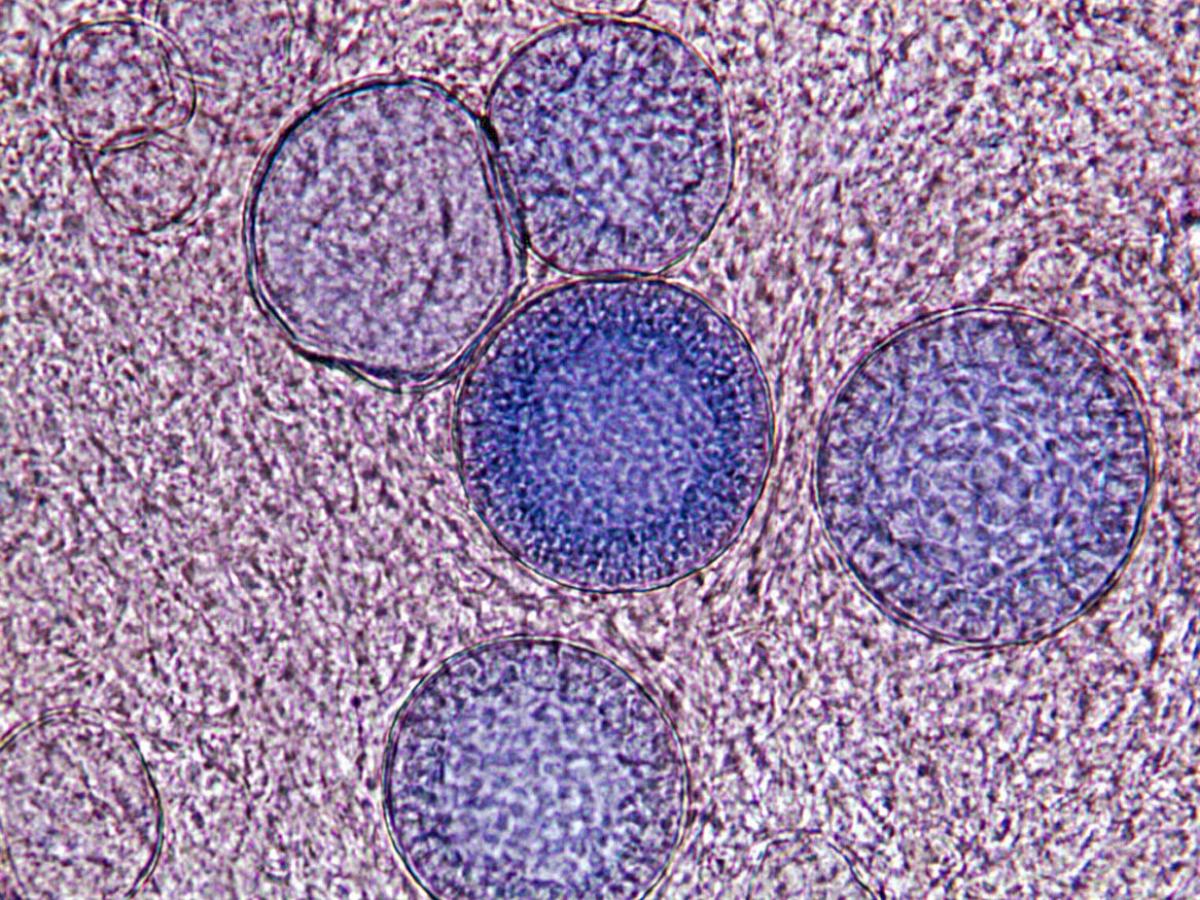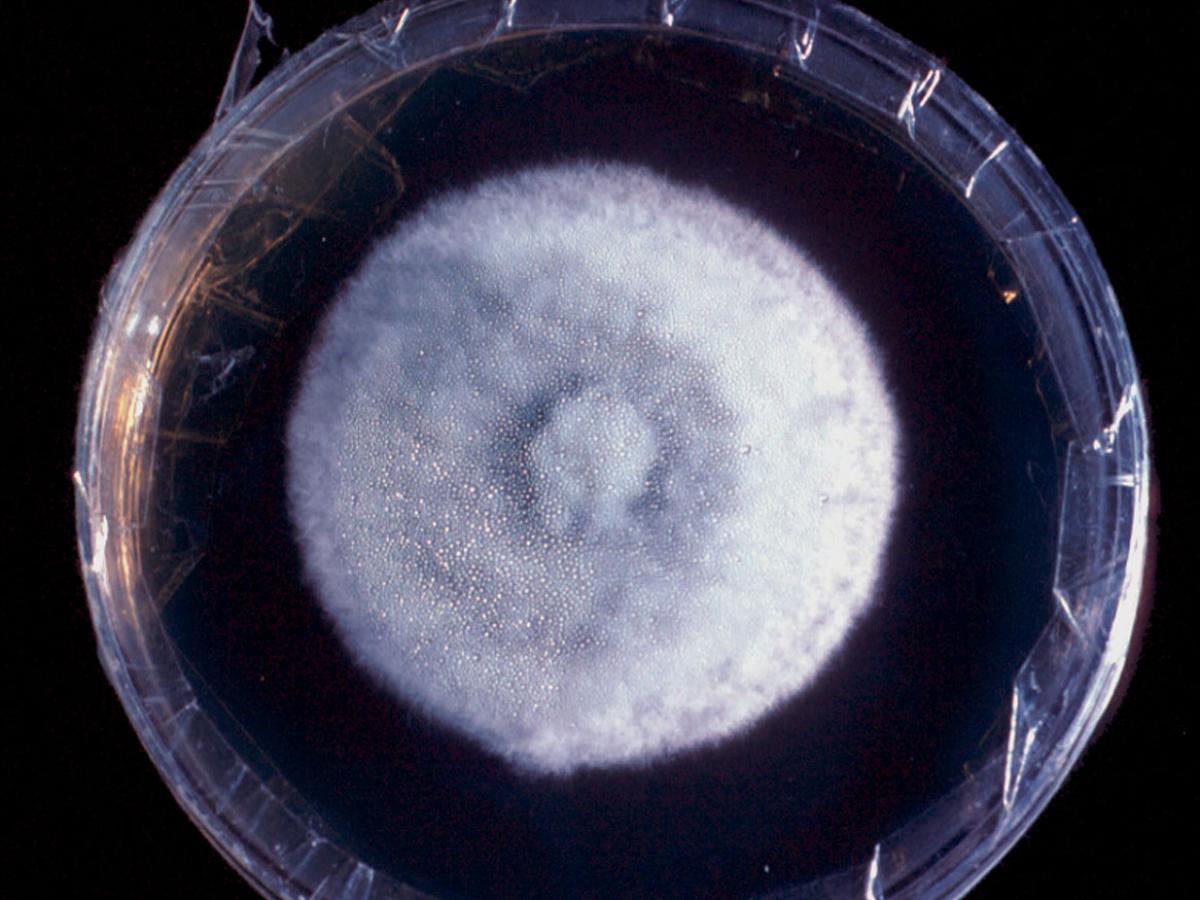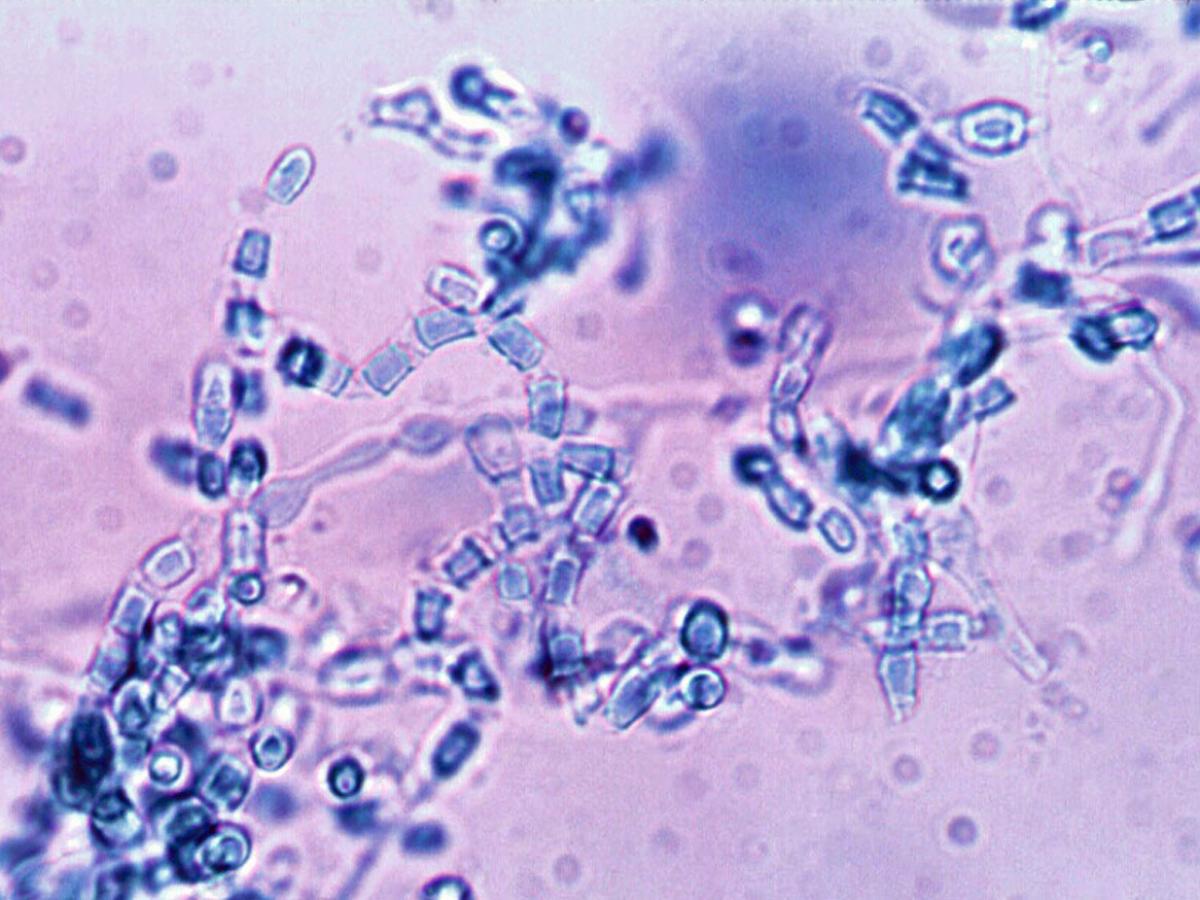Status message
Correct! Excellent, you have really done well. Please find additional information below.
Unknown 34 = Coccidioides immitis/posadasii
Direct microscopy (KOH stain): Direct microscopy of skin scrapings from a cutaneous lesion mounted in 10% KOH and Parker ink solution showing characteristic endosporulating spherules (sporangia) of Coccidioides immitis. The presence of spherules with endospores is diagnostic.
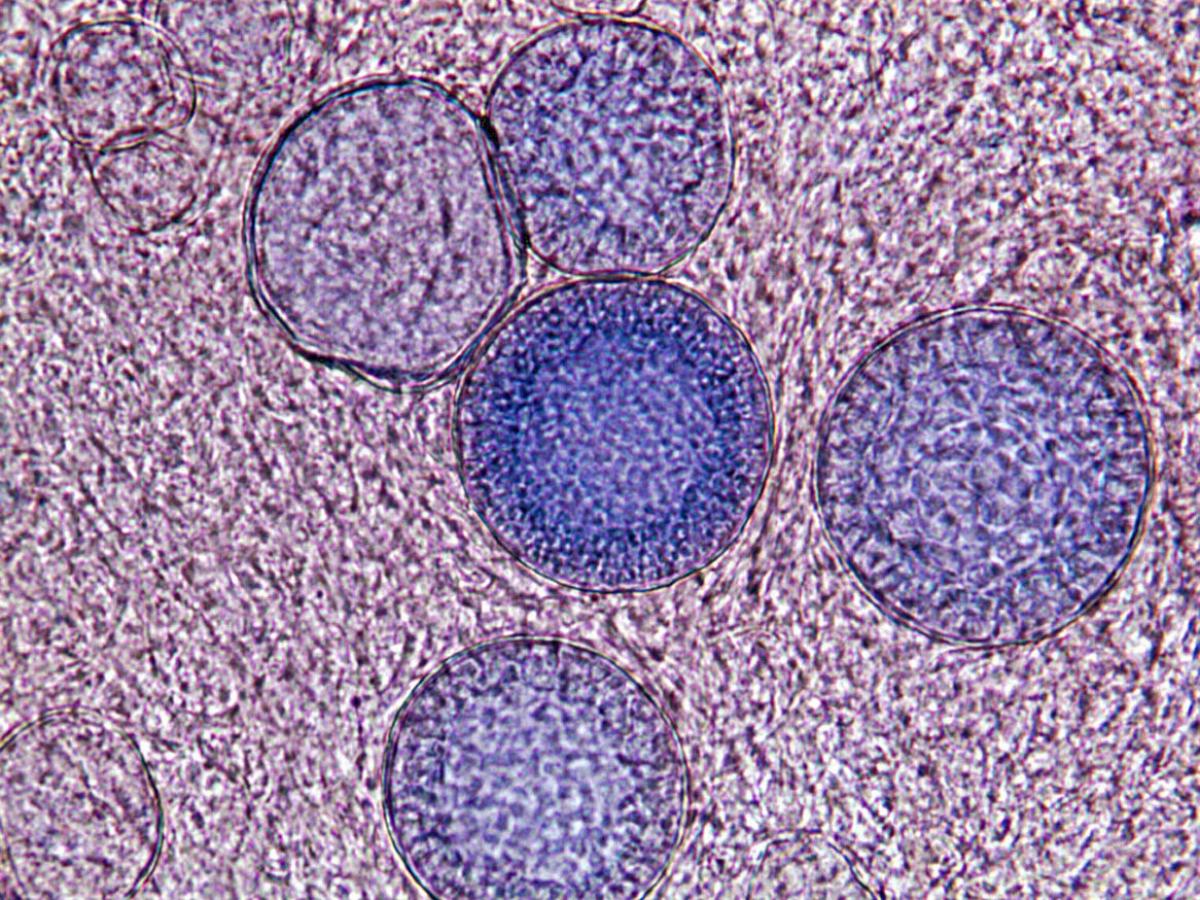
Culture: Colonies of C. immitis/posadasii on Sabouraud’s dextrose agar at 25C are initially moist and glabrous, but rapidly become suede-like to downy, greyish white with a tan to brown reverse, however considerable variation in growth rate and culture morphology has been noted.

Microscopy: Microscopy shows typical single-celled, hyaline, rectangular to barrel-shaped, alternate arthroconidia, 2.5-4 x 3-6 µm in size, separated from each other by a disjunctor cell. This arthroconidial state has been classified in the genus Malbranchea and is similar to that produced by many non-pathogenic soil fungi, e.g. Gymnoascus species.
WARNING: RG-3 organism. Cultures of Coccidioides immitis/posadasii represent a severe biohazard to laboratory personnel and must be handled with extreme caution in an appropriate pathogen handling cabinet. C. immitis/posadasiiis a dimorphic fungus, existing in living tissue as spherules and endospores, and in soil or culture in a mycelial form.
Culture identification by exoantigen test or ITS sequencing is now the method of choice.
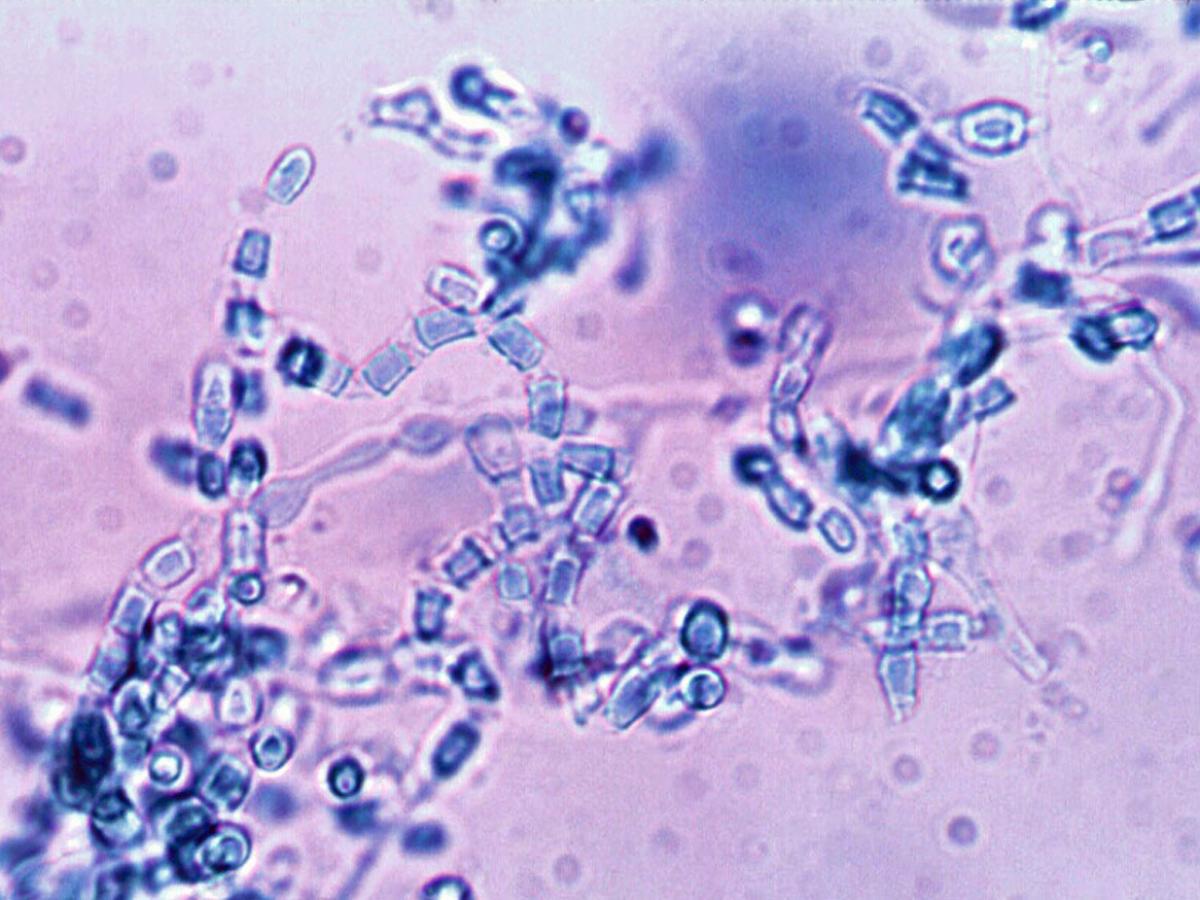
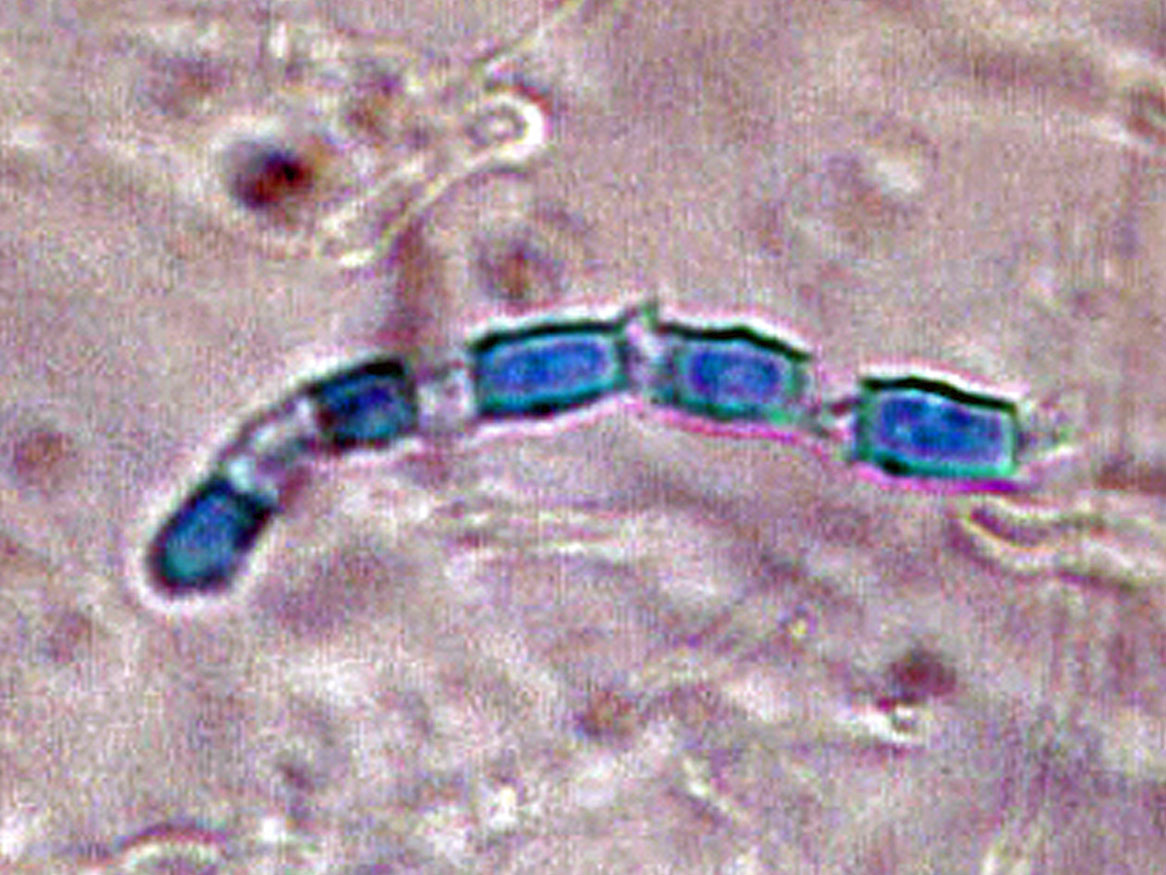
Exoantigen test: showing a positive result for C. immitis/posadasii.
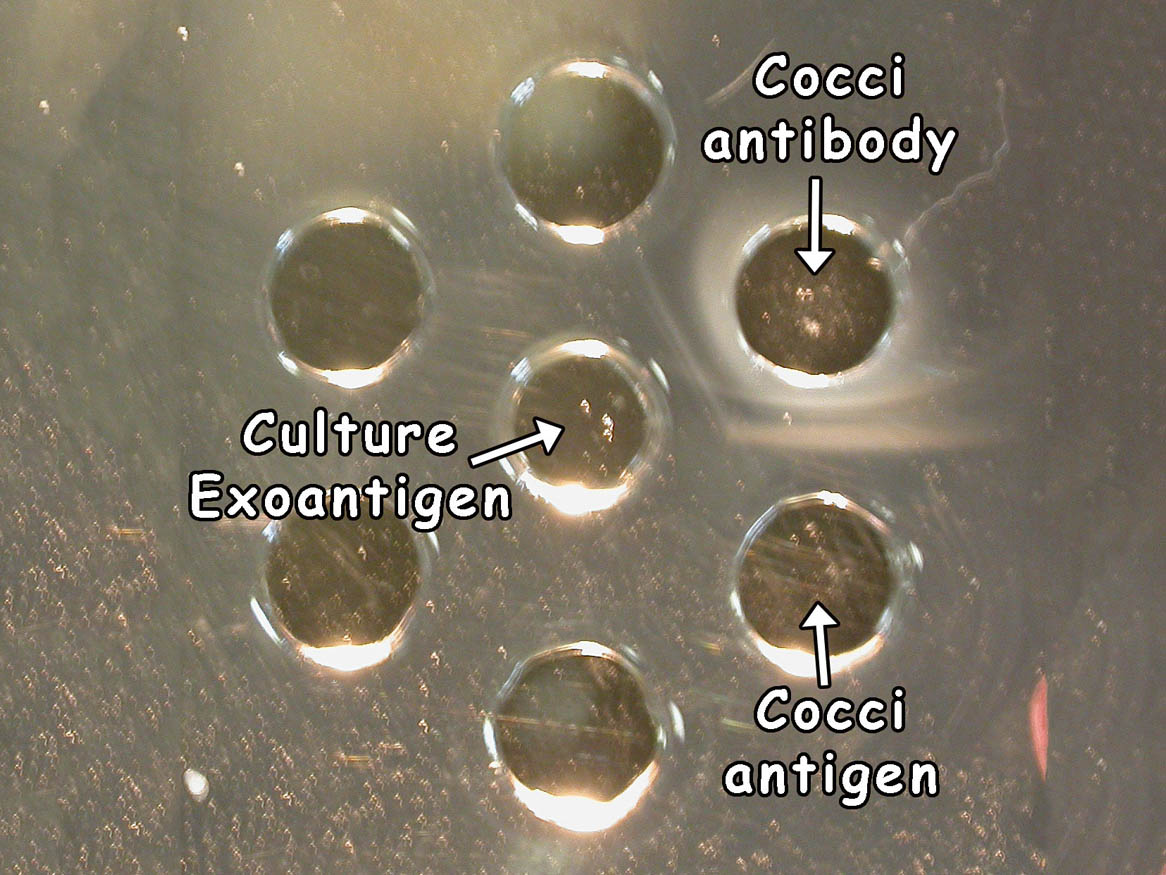
Comment: Recently Coccidioides immitis has been separated into two distinct species: C. immitis and C. posadasii. The two species are morphologically identical and can be distinguished only by genetic analysis and different rates of growth in the presence of high salt concentrations (C. posadasii grows more slowly). C. immitis is geographically limited to California’s San Joaquin Valley region and Mexico, whereas C. posadasii is found in California, Arizona, Texas, Mexico and South America.
Coccidioides immitis and C. posadasii are dimorphic fungi, existing in living tissue as spherules and endospores, and in soil or culture in a mycelial form. Culture identification by either exoantigen test or ITS sequencing is preferred to minimise exposure to the infectious propagule.
About Coccidioides Back to virtual assessment
